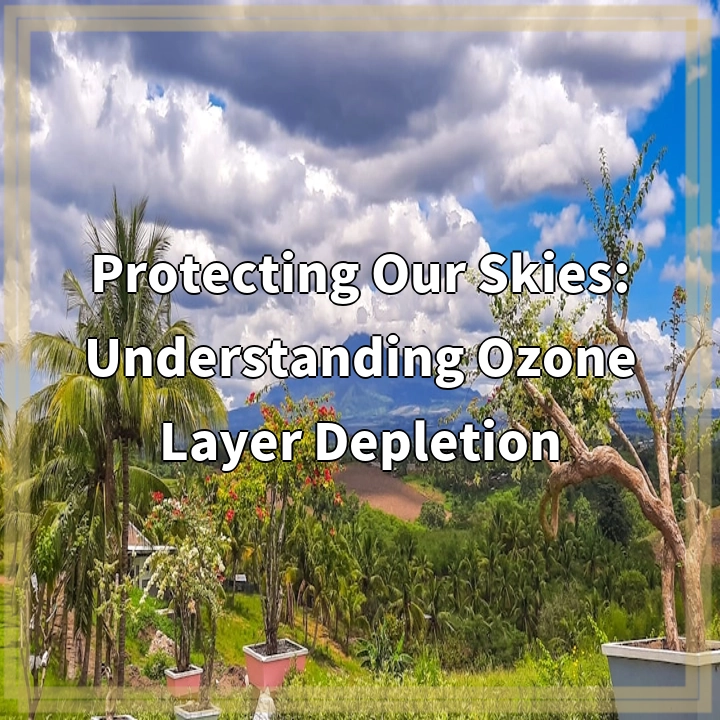Physical Address
304 North Cardinal St.
Dorchester Center, MA 02124
Physical Address
304 North Cardinal St.
Dorchester Center, MA 02124

The ozone layer is a protective layer in the Earth’s stratosphere that helps shield us from harmful ultraviolet (UV) radiation emitted by the sun. However, human activities, particularly the release of certain chemicals known as ozone-depleting substances (ODS), have progressively caused damage to this essential layer. Ozone layer depletion refers to the thinning or reduction of ozone concentration in specific areas or globally, leading to an increased influx of UV radiation reaching the Earth’s surface.
Ozone layer depletion has significant environmental and health consequences that affect both ecosystems and human well-being. Here are some key real-world problems associated with this phenomenon:
One of the primary concerns resulting from ozone layer depletion is the heightened risk of skin cancer. Excessive UV exposure damages DNA and increases the incidence of various types of skin cancer, including melanoma, the most dangerous form. Although individuals can take measures to protect themselves, such as using sunscreen and wearing protective clothing, the decreased ozone layer poses a widespread health threat.
Ozone layer depletion can have devastating effects on ecosystems worldwide. Increased UV radiation harms phytoplankton, tiny marine organisms that form the foundation of the ocean food chain. It also impacts the growth and productivity of terrestrial plants, adversely affecting agricultural and forest ecosystems. Furthermore, UV radiation can disrupt the reproductive cycles of various animals, leading to population declines and imbalances in ecosystems.
Ozone layer depletion contributes to climate change dynamics. Ozone-depleting substances, such as chlorofluorocarbons (CFCs), are potent greenhouse gases that have a significant warming effect. By depleting the ozone layer, these substances indirectly exacerbate the greenhouse effect and further contribute to global warming and climate change. The resulting alterations in weather patterns, sea-level rise, and other climate-related phenomena pose additional challenges for both natural and human systems.
Increased UV radiation due to ozone layer depletion can also harm a range of human-made materials. For instance, UV rays can cause degradation and fading of plastics, rubber, and various building materials. This not only affects the durability and aesthetic appeal of these materials but also contributes to increased waste generation as objects need to be replaced more frequently.
The Montreal Protocol, an international treaty signed in 1987, aims to phase out the production and consumption of ozone-depleting substances (ODS). Through this agreement, countries commit to reducing ODS production, implementing regulations, and supporting research to find alternatives. The successful implementation of the Montreal Protocol has resulted in the gradual recovery of the ozone layer.
Replacing ozone-depleting substances with environmentally friendly alternatives is crucial. Industries, particularly those involved in refrigeration, air conditioning, and aerosol production, should prioritize the use of substances that have minimal or no impact on the ozone layer. This includes adopting hydrofluorocarbons (HFCs) as substitutes for CFCs and other ODS.
Raising public awareness about the importance of the ozone layer and the consequences of its depletion is vital. Educational campaigns can encourage individuals to make environmentally conscious choices such as using ozone-friendly products, limiting exposure to the sun during peak UV hours, and supporting initiatives that promote ozone layer protection. Governments, non-profit organizations, and schools play crucial roles in disseminating information and promoting environmentally responsible behavior.
Ongoing scientific research is necessary to better understand ozone layer dynamics, potential threats, and the effectiveness of implemented measures. Regular monitoring of ozone levels helps to identify areas of concern and track the progress made in ozone layer recovery. This information can guide policymakers in making informed decisions and implementing targeted strategies to further protect the ozone layer.
By adopting these solutions, we can safeguard the ozone layer, mitigate the associated problems, and contribute to a healthier and sustainable planet for current and future generations.
If you’re wondering where the article came from!
#